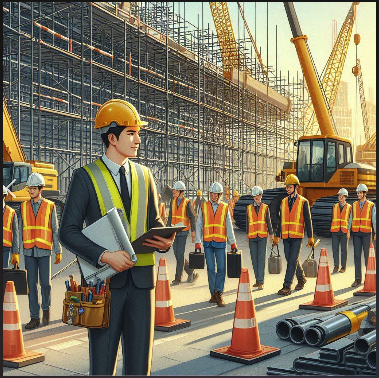No matter the type of property you manage, the safety of everyone that uses the facility will always be a fundamental concern for you.
And, although the specific guidelines for safety protocols will vary from one industry to the other, there are some universal traits that can help building owners and managers to mitigate avoidable incidents, injuries, or worse.
Especially in fast-paced environments with heavy equipment such as busy manufacturing plants, or large schools with a high population of young children, the consequences of a failure in safety protocols can be almost impossible for the affected families or companies to recover from.
We hope that the few tips we’ll be sharing below will help you to identify any areas where safety is being compromised on your property and then give you some ideas to quickly map out a plan for immediate improvements.
1. Continuous Safety Training At All Levels
Improving safety starts with knowledge. Schedule comprehensive training sessions for every member of your maintenance team, vendors, and occupants. Thereafter, send short easy to remember safety-related information or “reminders” at intervals to keep everyone safety conscious. This is key to improving safety performance in any location.
A common mistake building owners make is to limit safety training to just their craftspeople. That’s an oversight because if everyone is trained to spot hazards, it will help to minimize accidents and injuries. Another point is to ensure that newcomers to the premises (staff or occupants) should also have access to this training as soon as possible.
2. Automate Safety Monitoring
As a property owner or manager, safety is a major concern for you as you could be liable for accidents and injuries on your premises. However, there are so many other responsibilities that will demand your attention daily. Your maintenance team will often be quite busy as well. In such situations, it’s just a matter of time before an important safety inspection or repair is forgotten. To reduce your exposure to this kind of risk, it’s preferable that you automate safety monitoring using a computerized maintenance management system (CMMS).
You can use a CMMS to schedule safety inspections well in advance and get reminders along with step-by-step instructions for executing each inspection.
3. Ensure Prompt Maintenance
Deferred, rushed, or subpar maintenance are common causes of safety issues especially in the case of complex or high-risk equipment. For instance, imagine the likely risks of not servicing your fire fighting installations when due. Or, it was serviced but not in compliance with laid down regulations. As a result, there’s a fire outbreak but the system fails to activate. Disaster.
Poorly executed maintenance or delayed maintenance contributes to safety hazards, avoidable accidents, and negative consequences for building owners.
Fortunately, having a planned maintenance program backed by maintenance software can help you to eliminate many of these issues. It removes confusion and guesswork from safety management and enables your team to protect lives and property based on data and facts.
4. Standardize Safety Procedures
It’s important that everybody has access to all necessary safety information and procedures in a standardized manner. If your premises are particularly large or it’s a skyscraper, you should consider creating a written safety policy and evacuation plan.
You should ask the following questions:
- Do we have an emergency plan?
- Do occupants know what to do in an emergency?
- If there’s an emergency, who does what and when?
- Do we have a muster point?
- When was our last fire drill?
- Who are our first responders in an emergency?
- When was the last safety audit and have we made any improvements based on the audit results?
It may sound like a lot, but it’s necessary to ask these kinds of questions and to be prepared. A CMMS will make it even easier for you.
By incorporating your safety plan with a CMMS, you get the following:
- Easily create and update safety checklists.
- Set reminders for safety inspections.
- Adequate evidence for safety compliance audits by regulatory authorities.
5. Track Safety Risks
A major benefit of having historical data for a property is that it allows you to quickly spot trends and guard against them. For example, your records may show that most safety incidents happen at a particular season or time of the year e.g. there may be more reports of slips and falls during winter. Or the majority of accidents on your premises involve a particular machine.
With a best-in-class CMMS, you can quickly spot trends by accessing its powerful reporting modules and user-friendly dashboards. Using this information, it’s easy to pinpoint high-risk machines and situations to avoid recurrences.
Free Demo
The sad reality is that injuries happen while managing properties and these injuries can be severe. Therefore, it’s prudent to update your maintenance strategy with modern software specifically designed to deliver multiple benefits. Contact us right away for a free demo.
Free DemoFree Demo






